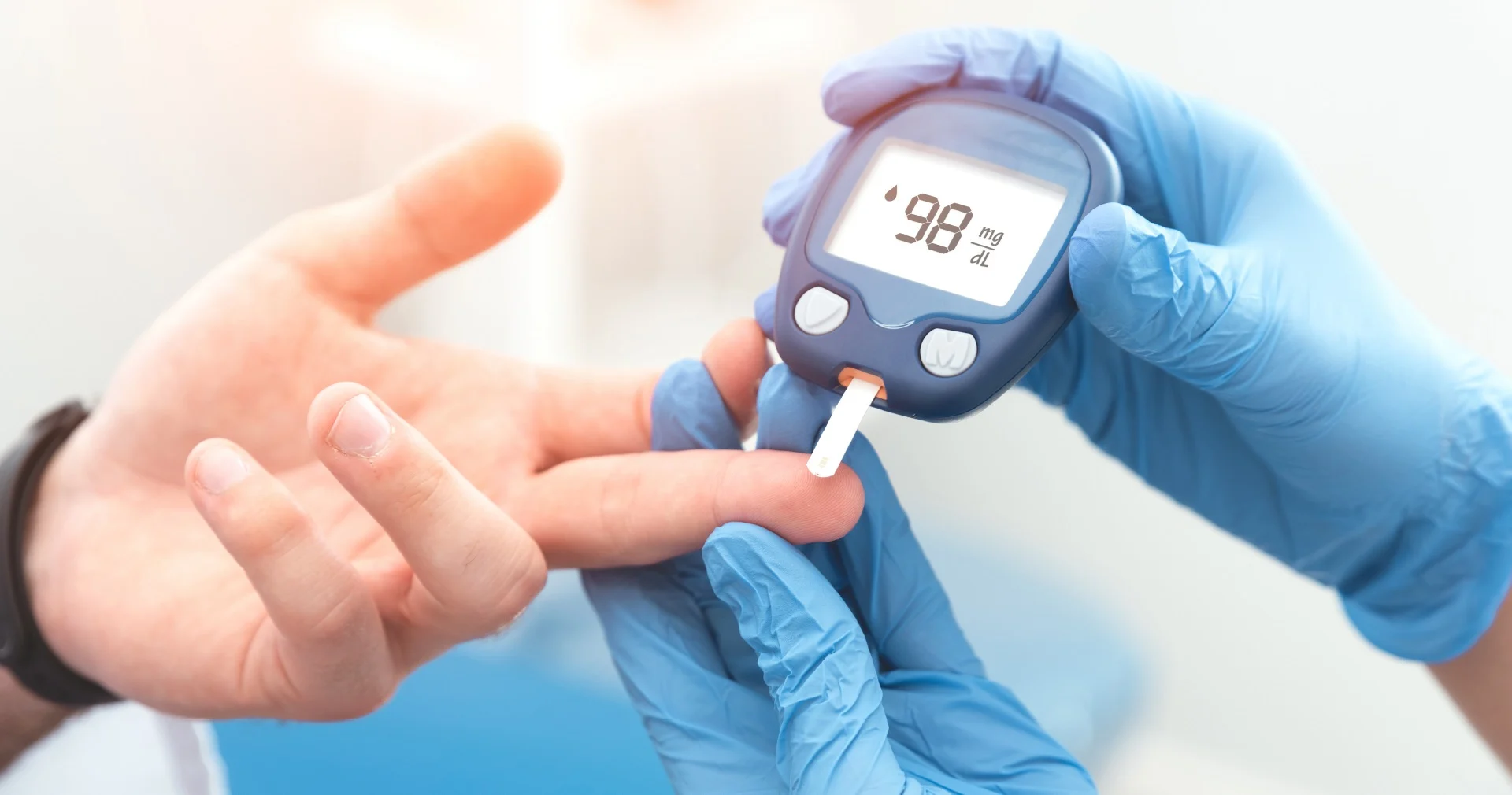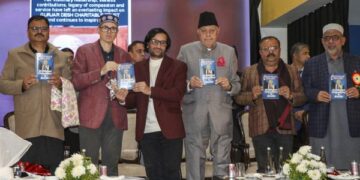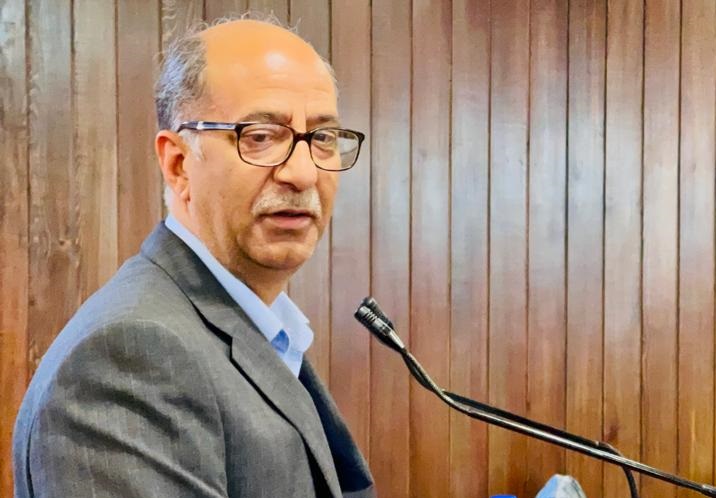Srinagar: Around 7.8 percent of the population in Jammu and Kashmir and Ladakh is currently suffering from diabetes, while over 10.5 percent are in the prediabetes stage, a doctor said on the occasion of World Diabetes Day, on Thursday.
Endocrinologist Dr Mohammad Ashraf Ganie, who is also the Director of Sher-i-Kashmir Institute of Medical Sciences (SKIMS) in Soura, revealed these findings during a media interaction at the institute.
According to the details, these findings are based on the results of the ICMR INDIAB Study — the world’s largest study on diabetes conducted by the Indian Council of Medical Research (ICMR). The study provides in-depth data on the prevalence of diabetes and other metabolic NCDs (non-communicable diseases) across different states and UTs, including Jammu and Kashmir and Ladakh.
Dr Ganie said non-communicable diseases, particularly diabetes, are rapidly rising in India, including in J&K and Ladakh regions. He said the ICMR-INDIAB study has highlighted regional variations in the prevalence of these diseases.
The increasing rates of diabetes, prediabetes, hypertension and obesity are due to unhealthy lifestyle practices, including poor diet, lack of exercise and increasing stress, he added.
“The rapid increase in the prevalence of NCDs in our region is alarming. These diseases, especially diabetes, are preventable through simple lifestyle changes,” Dr Ashraf said, adding that there is an urgent need for coordinated efforts among healthcare providers, government bodies and social organisations to raise awareness and promote healthier lifestyle choices.
The Director SKIMS said the media plays a crucial role in spreading awareness and creating a cultural shift toward healthier living. He said the results of the study called for urgent public health interventions at the grassroots level to address these growing concerns.
According to the findings, 7.8 percent of the population in J&K and Ladakh is diagnosed with diabetes. Out of these, 5.4 percent are aware of their condition, while 2.4 percent remain unaware.
It also revealed that 10.5 percent of the population is in the prediabetes stage, which puts them at high risk of developing diabetes in the future.
“30 percent of the population in the region is hypertensive, while 57.6 percent are considered obese,” it stated.
Dr Ganie said the study, which involved a comprehensive survey across urban and rural areas of J&K and Ladakh, was conducted in phases with a stratified multistage sampling approach. The data from the study is critical for understanding the regional variations in the prevalence of diabetes, obesity, hypertension, and other NCDs.
“State governments will be able to use this detailed data to better allocate resources and focus on prevention, early diagnosis and effective management of NCDs,” Dr Ganaie said, adding that the study also paves the way for collaboration between ICMR, local governments, healthcare providers, and community leaders to implement region-specific interventions aimed at combating NCDs.
The Director SKIMS said that in the future, the ICMR plans to leverage insights from the study to further strengthen public health initiatives and encourage healthier lifestyle practices, especially in underserved areas.( With inputs from KNO)
Over 60% people with diabetes unaware of it: WHO regional director for South-East Asia
WHO Regional Director for South-East Asia Saima Wazed Thursday said more than 60 percent of people with diabetes in the region are unaware of it and stressed the need for awareness about the condition through campaigns aimed at a healthy lifestyle.
She said the care services need to be equitable, comprehensive, accessible, and affordable and underlined that bridging the service gap to ensure timely access to diabetes care can save lives.
“In our region, less than one in three adults with diabetes are on treatment and less than 15 percent of people living with the condition have it under control.
“The lack of readiness in our primary healthcare systems in terms of standard management protocol, availability of essential medicines, issues related to availability and affordability of quality diagnostics, and trained healthcare professionals need to be remedied immediately,” the WHO regional director said.
On the occasion of World Diabetes Day, being observed this year with the theme “Breaking Barriers, Bridging Gaps”, Wazed said, “It serves as a reminder to all of us of the need to collectively work to overcome the growing burden of diabetes globally and in WHO South-East Asia Region.”
The theme emphasizes the importance of tackling the challenges faced by individuals, communities, and health systems to access diabetes prevention and management, she said.
Estimates for 2022 indicate that diabetes affects nearly 246 million people in the WHO South-East Asia Region.
Wazed said, “More than 60 percent of people with diabetes in the region are unaware of their status.”
People need to be made aware of the prevention, detection and management of diabetes through awareness drives integrated with campaigns aimed at healthy lifestyles and those targeted at maternal, child and adolescent health, she said.
The outcomes of untreated and uncontrolled diabetes range from heart attacks, strokes, kidney failure, blindness and amputations, the WHO regional director said, adding these complications not only impose an emotional and financial burden on individuals and families but also a significant strain on healthcare systems.
She asserted that the prevention of diabetes risk factors needs an enabling environment.
The policy and programmatic initiatives of countries in the WHO South-East Asia region to address tobacco control, obesity, trans fatty acid elimination and physical inactivity are positive steps and are being identified as good practices globally.
“There is a further need to strengthen the integration of diabetes care into primary healthcare systems, including the implementation of the WHO HEARTS D technical package in the national context.
“Equipping primary health care with essential medicines and diagnostics including HbA1c testing, robust systems for monitoring the diabetes outcomes, and integration of diabetes services with infectious diseases like tuberculosis to mutually benefit both TB and NCD programmes,” Wazed said.(PTI)








